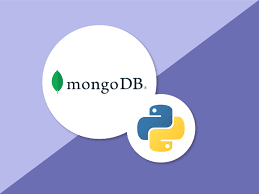Day 33: Master MongoDB Database Integration in Python
 Archana Prusty
Archana PrustyTable of contents
- Introduction :
- How to Install MongoDB on Windows:
- What is MongoDB database:
- Relational Database vs Document Database:
- Relational Databases/SQl Databases
- 2. Document Databases/NoSQl Databases:
- MongoDB Structure:
- NoSQL Database Types:
- Comparing MongoDB to RDBMS :
- how to install mongo db : window 8
- Query (CURD) →
- add a new field :
- remove a field:
- remove a document from Collection:
- Limit() Method:

Introduction :
Welcome back to my Python journey! Yesterday, I laid the foundation with mysql database in python.
Today, I dove into something more on database MongoDB, Let's explore what I learned!
How to Install MongoDB on Windows:
Step 1)
Download MongoDB Community Server Go to link and Download MongoDB Community Server. We will install the 64-bit version for Windows.
Link :
Step 2) Click on Setup Once download is complete open the msi file. Click Next in the start up screen
Step 3) Accept the End-User License Agreement
Accept the End-User License Agreement
Click Next
Step 4) Click on the “complete” button
Step 5) Service Configuration
Select “Run service as Network Service user”. make a note of the data directory, we’ll need this later.
Click Next
Step 6) Start installation process
Click on the Install button to start the installation.
Step 7) Click on the Finish button
What is MongoDB database:
It is Document Database/NoSql database.
where we can use MongoDB:
We can use everywhere
For desktop applications
For mobile applications
For web applications, this database is more popular.
Relational Database vs Document Database:
There are 2 most common types of databases.
1. Relational Databases/SQl Databases
2. Document Databases/NoSQl Databases
Relational Databases/SQl Databases
The data will be stored in tables and these tables has fixed schema.
Example :
Employee(eno,ename,esal,eaddr)
The data stored in tables has relationships like:
one to one
one to many
many to one
etc
To retrieve data from relational databases, we have to write join queries which collects data from different tables.
Example :
Oracle,MySQL etc
2. Document Databases/NoSQl Databases:
Data will be stored in separate documents and each document is independent of others.
Example :
MongoDB, atlas,realm
MongoDB Structure:
MongoDB Physical database contains several logical databases.
Each database contains several collections. Collection is something like table in relational database.
Each collection contains several documents. Document is something like record/row in relational database.
A NoSQL database has a dynamic schema for unstructured data. In NoSQL, data is stored in several ways: it can be column-oriented, document-oriented, graph-based or organized as a key-value store.
A NoSQL database has the following advantages:
Documents can be created without having to first define their structure
Each document can have its own unique structure
The syntax can vary from database to database
Large volumes of structured, semi-structured, and unstructured data
Object-oriented programming that is easy to use and flexible
It is horizontally scalable
NoSQL Database Types:
- Document databases pair each key with a complex data structure known as a document. A document is a set of key-value pairs.
Comparing MongoDB to RDBMS :

how to install mongo db : window 8
how to set path:
C:\Program Files\MongoDB\Server\4.0\bin ->copy this path after set path
How to start mongoserver :
open window cmd -> type mongod command
how to start mongo client:
open window cmd -> type mongo command
Query (CURD) →

add a new field :
db.collection_name.update({},{$set:{filedname:value}})
remove a field:
db.collection_name.update({}{$unset:{fileldname:value}})
remove a document from Collection:
db.collection_name.remove({}) -> Remove all document db.collection_name.remove({key:value}) -> remove single document
Limit() Method:
it accepts one number of argument, i.e the number of document want to be display.
Example :
db.COLLECTION_NAME.find().limit(2)
Challenges :
Understanding python databases.
Handling errors.
Resources :
Official Python Documentation: python databases
W3Schools' Python Tutorial: python databases
Scaler's Python Courses : python databases
Goals for Tomorrow :
- Explore something more on mysql database and MongoDB.
Conclusion :
Day 32’s a success!
What are your favorite Python resources? Share in the comments below.
Connect with me :
GitHub: [ https://github.com/p-archana1 ]
LinkedIn : [ linkedin.com/in/archana-prusty-4aa0b827a ]
twitter : [ https://x.com/_archana77 ]
Join the conversation :
Share your own learning experiences or ask questions in the comments.
HAPPY LEARNING!!
THANK YOU!!
Subscribe to my newsletter
Read articles from Archana Prusty directly inside your inbox. Subscribe to the newsletter, and don't miss out.
Written by

Archana Prusty
Archana Prusty
I'm Archana, pursuing Graduation in Information technology and Management. I'm a fresher with expertise in Python programming. I'm excited to apply my skills in AI/ML learning , Python, Java and web development. Looking forward to collaborating and learning from industry experts.